12 Ways to Keep Your Garden Watered During a Heatwave
As temperatures rise, keeping your garden properly watered becomes more challenging. With the scorching heat of a heatwave, plants require extra care to ensure they stay hydrated and thrive. Implementing efficient watering techniques can help conserve water while ensuring your plants receive the moisture they need. From using water-efficient tools to adjusting your watering schedule, there are several strategies to keep your garden healthy during extreme heat.
This post may contain affiliate links, which helps keep this content free. Please read our disclosure for more info.
Use Soaker Hoses
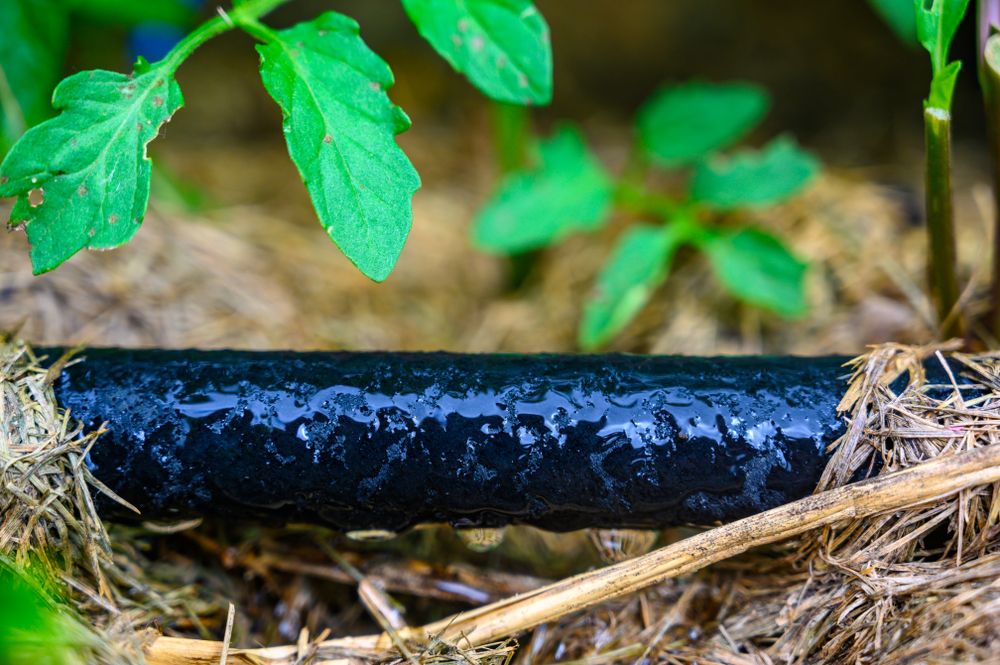
Soaker hoses are an effective way to water your garden during a heatwave. Unlike traditional sprinklers, soaker hoses release water directly to the soil, minimizing evaporation and ensuring that the moisture reaches the plant roots. This method is highly efficient because it avoids wetting the leaves, which can lead to mold growth and diseases, especially in high heat. The water seeps slowly through the porous material, allowing it to be absorbed at a steady rate by the plants, ensuring deep hydration.
When using soaker hoses, it is important to lay them close to the root zone, either along plant rows or in circles around individual plants. This method ensures water goes straight to where it’s needed most. Adjusting the water pressure can also help control the flow, so the hose doesn’t flood the soil too quickly. Soaker hoses not only save water, but they also help in maintaining a consistent moisture level, which is key during extreme heat.
Install Drip Irrigation
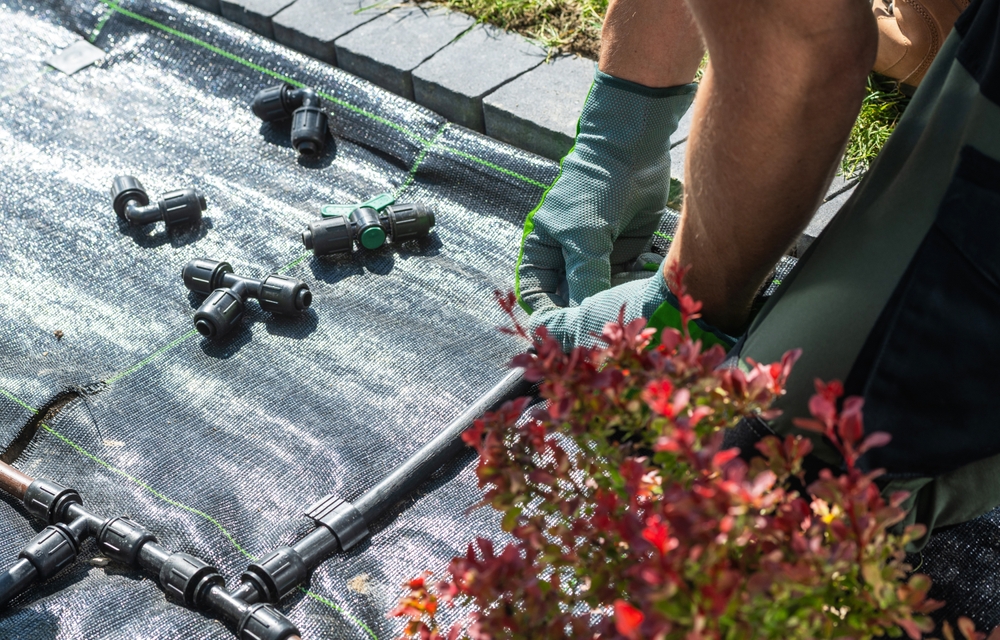
Drip irrigation systems are an ideal solution for watering plants efficiently during a heatwave. This system delivers water directly to the soil near the roots through a network of tubing and emitters. It’s particularly beneficial during hot weather because it prevents evaporation that often occurs with overhead sprinklers. Drip irrigation minimizes water waste by applying water where it is most needed and in precise amounts. It ensures that each plant gets enough moisture without over-watering, which can lead to root rot or other problems.
Additionally, drip irrigation can be set up on timers to ensure consistent watering even when you are not around. This method helps reduce water runoff and ensures plants are watered deeply and efficiently. For heatwaves, this system is highly effective in keeping your garden hydrated without using excessive amounts of water, making it both environmentally and economically sustainable.
Water Deeply, Not Frequently
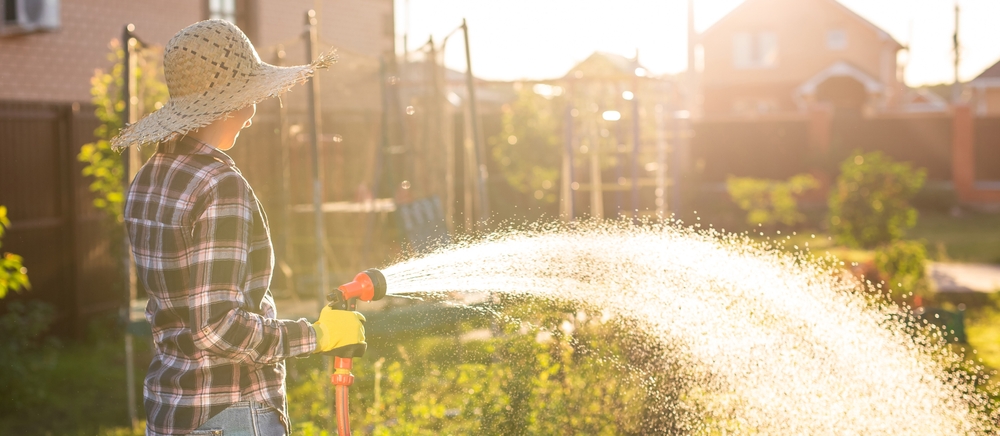
Watering deeply, rather than frequently, is one of the best strategies during a heatwave. Shallow watering encourages roots to stay near the surface, where they are more vulnerable to drying out under intense sun. By watering deeply, you ensure that moisture reaches the deeper root zones, encouraging the plant roots to grow deeper and become more drought-resistant. Deep watering also helps prevent the surface soil from drying out too quickly, which can lead to cracking and further moisture loss.
During a heatwave, it’s essential to water plants thoroughly but less often, allowing the soil to dry out between waterings. Over-watering or frequent light watering can cause shallow root systems and weaken plants over time. A good rule of thumb is to water once or twice a week with a deep soak, depending on the plant’s needs, rather than daily watering, which wastes water and does not promote healthy root growth.
Mulch Your Garden
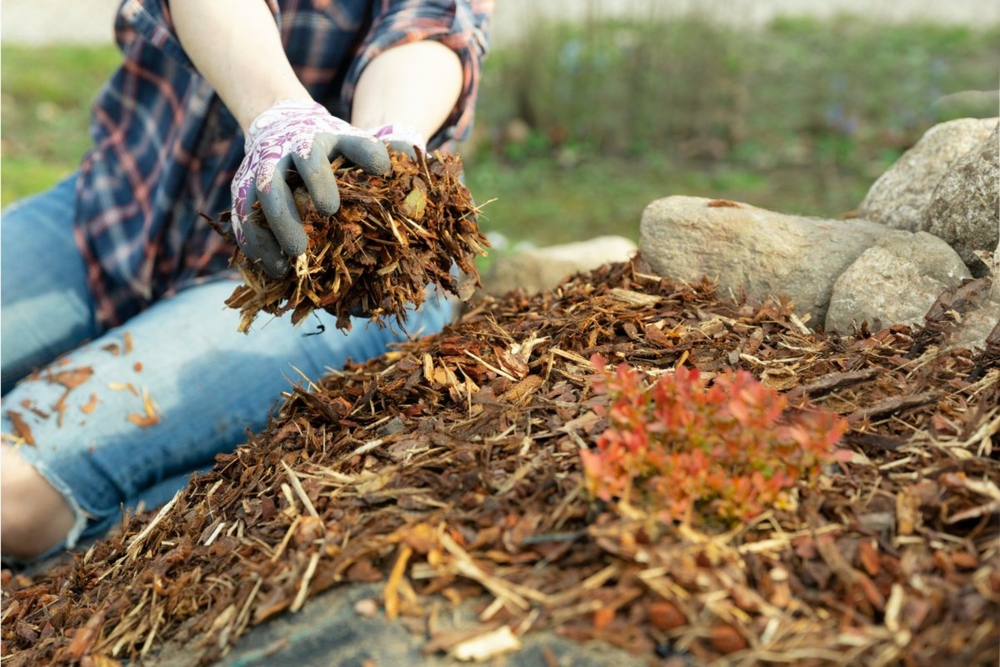
Mulch is a vital tool for conserving moisture in the garden, especially during a heatwave. When applied around plants, mulch acts as a protective blanket that helps to keep the soil cool and retain moisture. During hot weather, the sun can quickly dry out the soil, but mulch slows down this process by acting as a barrier against evaporation. Organic mulches like bark, straw, or compost also improve soil structure over time, adding nutrients as they decompose.
In addition to moisture retention, mulch helps regulate soil temperature, which is crucial for plant health during extreme heat. It keeps the roots cooler and more stable, reducing heat stress on plants. Mulching also prevents weed growth, which can compete with your plants for water and nutrients. For the best results, apply a 2-3 inch layer of mulch around your plants, taking care not to pile it up against the plant stems to avoid moisture buildup and rot.
Water Early in the Morning

Watering your garden early in the morning is one of the most effective ways to conserve water during a heatwave. During the cooler morning hours, evaporation rates are lower, so more water reaches the soil and benefits the plants. If you wait until later in the day when the sun is at its peak, much of the water will evaporate before it can be absorbed. Early watering also helps prevent fungal diseases, as it allows the plants to dry off quickly before the humidity rises later in the day.
By watering early, your plants also have the whole day to absorb and utilize the moisture, which can help them endure the afternoon heat. The soil is typically cooler in the morning, allowing the water to be absorbed more effectively into the ground. A morning watering routine also ensures that your plants are ready for the heat of the day, reducing stress on the plants and helping them remain hydrated throughout the hottest part of the day.
Use Shade Cloth
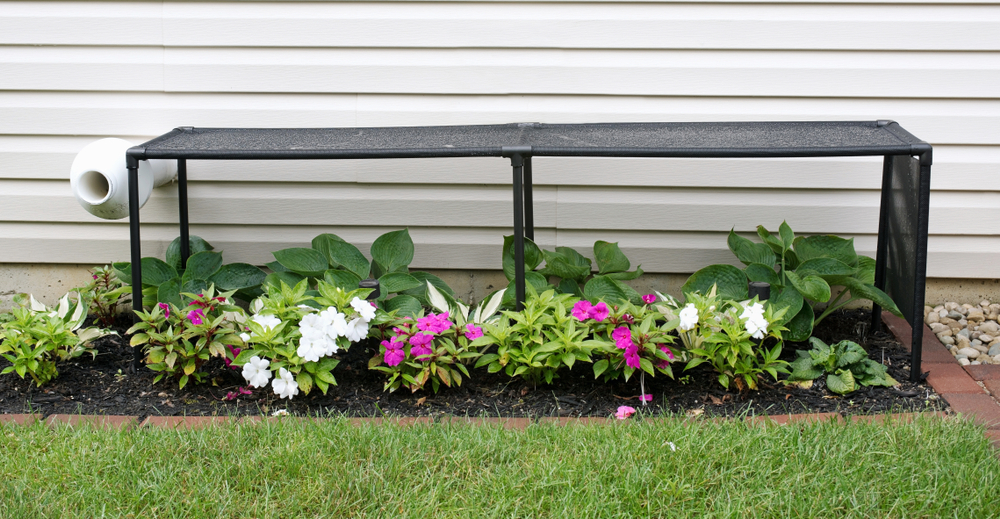
Using shade cloth is another excellent way to protect your garden during a heatwave. This type of cloth provides a protective barrier that blocks out a portion of the sun’s intense rays while still allowing air to circulate. Shade cloth comes in different densities, so you can select one that suits your plants’ needs. Plants that are not well-suited to extreme sunlight can benefit greatly from the cooler temperatures provided by shade cloth, which helps reduce water loss and stress.
When setting up shade cloth, make sure it’s positioned to cover the most vulnerable plants, particularly those that are newly planted or more delicate. While the cloth provides shade, it still allows rainwater or irrigation to pass through, ensuring that the plants continue to receive water. This solution is particularly effective for delicate vegetables, flowers, or shrubs that might otherwise scorch in direct sunlight.
Collect Rainwater
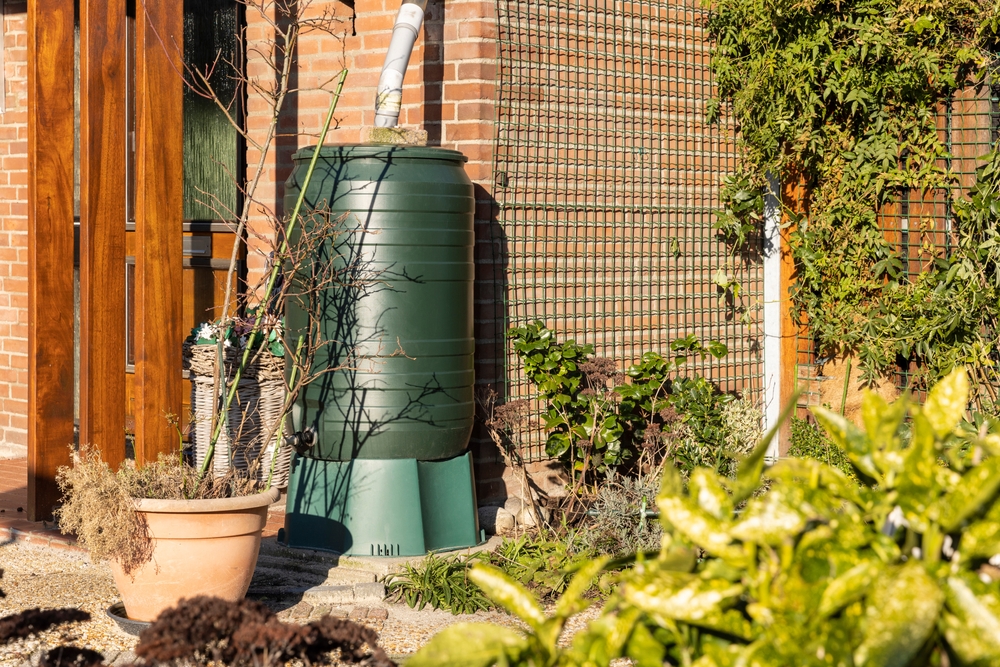
Rainwater harvesting is an eco-friendly and efficient way to water your garden during a heatwave. By installing rain barrels or other collection systems, you can capture rainwater and use it during dry spells or heat waves. Rainwater is free from chemicals found in tap water, such as chlorine and fluoride, which can sometimes be harsh on plants. Collecting rainwater also reduces your reliance on municipal water systems, which can be crucial during periods of drought.
To make the most of rainwater collection, place the barrels under downspouts from your roof and ensure they are properly sealed to prevent contamination. You can use the collected water to irrigate your garden, ensuring that it stays hydrated during hot, dry conditions. A well-maintained rainwater collection system can provide a reliable water source, helping to keep your plants healthy and reduce your water bill.
Choose Drought-Tolerant Plants
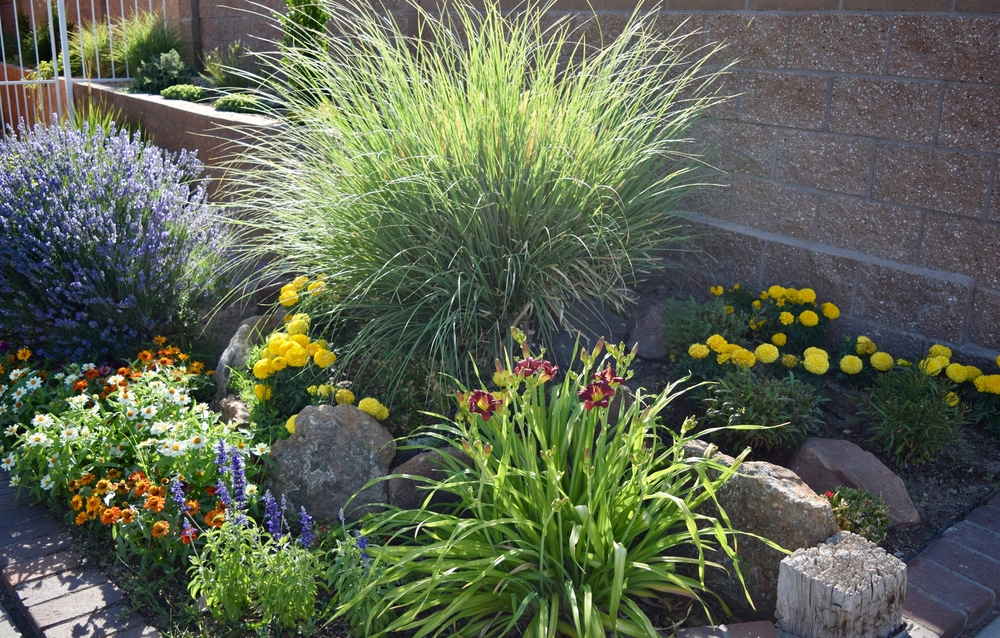
Selecting drought-tolerant plants is a smart way to reduce the amount of water needed in your garden, especially during a heatwave. These plants are adapted to survive in dry conditions, requiring less frequent watering and being more resilient to high temperatures. By incorporating drought-tolerant species into your garden, you can create a landscape that requires less maintenance and water during extreme heat. Examples include succulents, lavender, and native grasses that thrive in hot, dry climates.
Choosing drought-tolerant plants not only reduces water usage but also supports local ecosystems. Many drought-tolerant plants are native to the region, meaning they are better suited to the climate and require less human intervention. This can create a more sustainable and resilient garden, helping your landscape thrive even during the hottest months.
Use Watering Cans
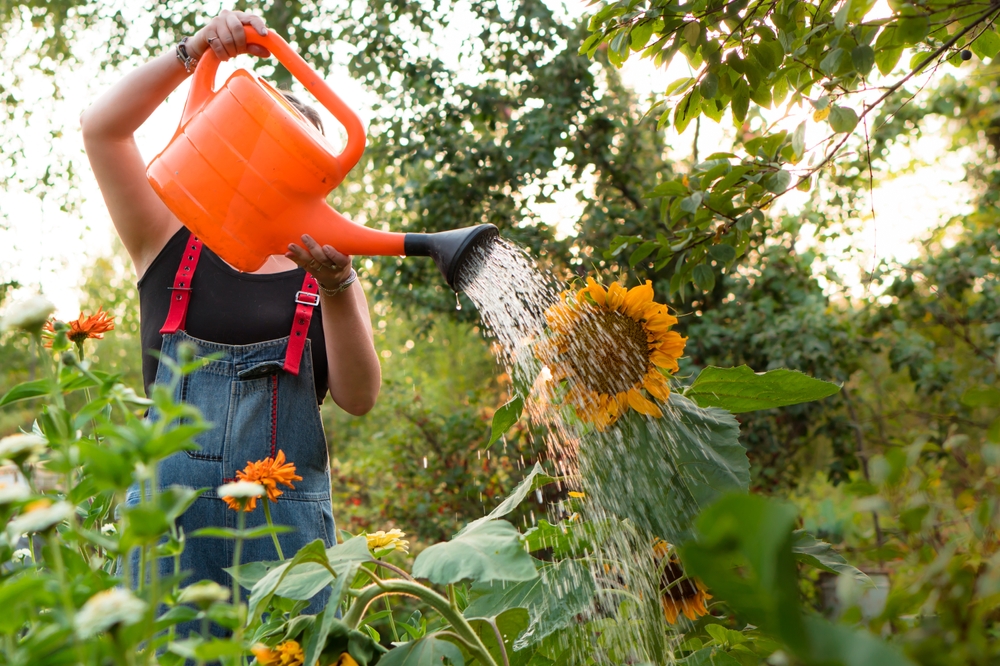
Watering cans provide a hands-on, controlled method of watering during a heatwave. By using a watering can, you can target specific plants and ensure they receive the right amount of water. This method is particularly useful for smaller gardens or when watering delicate plants that require gentle hydration. It also reduces water waste by allowing you to water more slowly and carefully, unlike sprinklers that can sometimes flood areas unnecessarily.
When using a watering can, be sure to water deeply at the base of the plants, focusing on the root zone. This will ensure that the moisture is absorbed where it is most needed. Watering cans come in various sizes, so choose one that suits your garden’s needs, and remember to keep it filled with water to prevent having to make multiple trips.
Avoid Watering During Windy Conditions
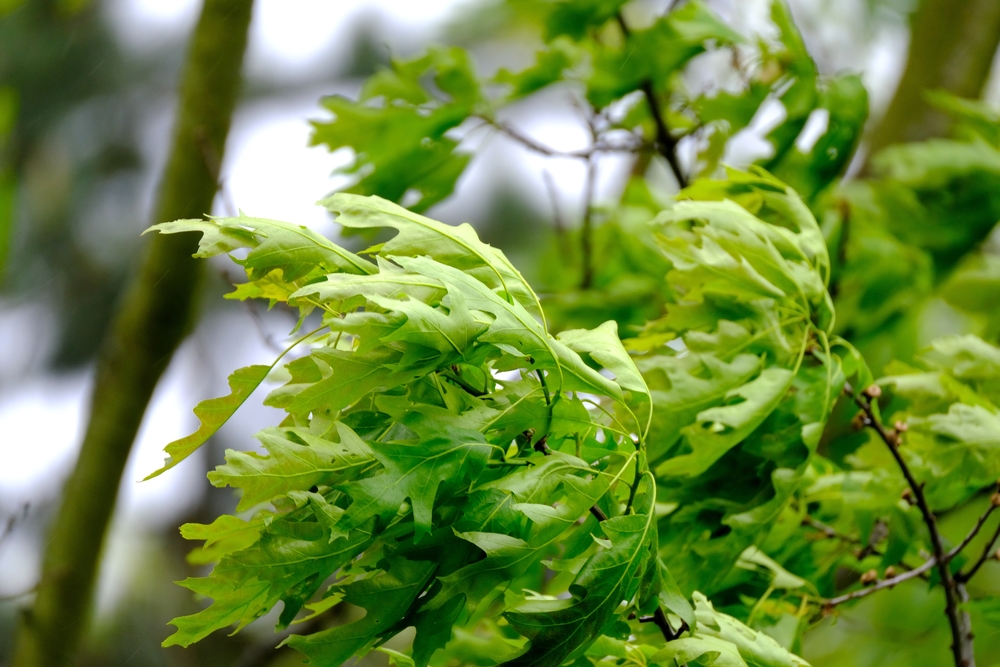
Watering your garden during windy conditions can lead to inefficient watering. The wind can cause the water to evaporate before it reaches the soil, wasting precious moisture and making your watering efforts less effective. Additionally, strong winds can scatter water, causing it to miss the plants entirely or create uneven wetting, which can lead to some plants being over-watered while others are left dry.
To make the most of your watering efforts, wait until the wind dies down or choose a more sheltered area to water. If possible, water your garden early in the morning when winds are calmer. This ensures that your water is absorbed into the soil and reaches the plants’ roots, keeping them hydrated and healthy during the heatwave.
Consider Using Automatic Sprinklers
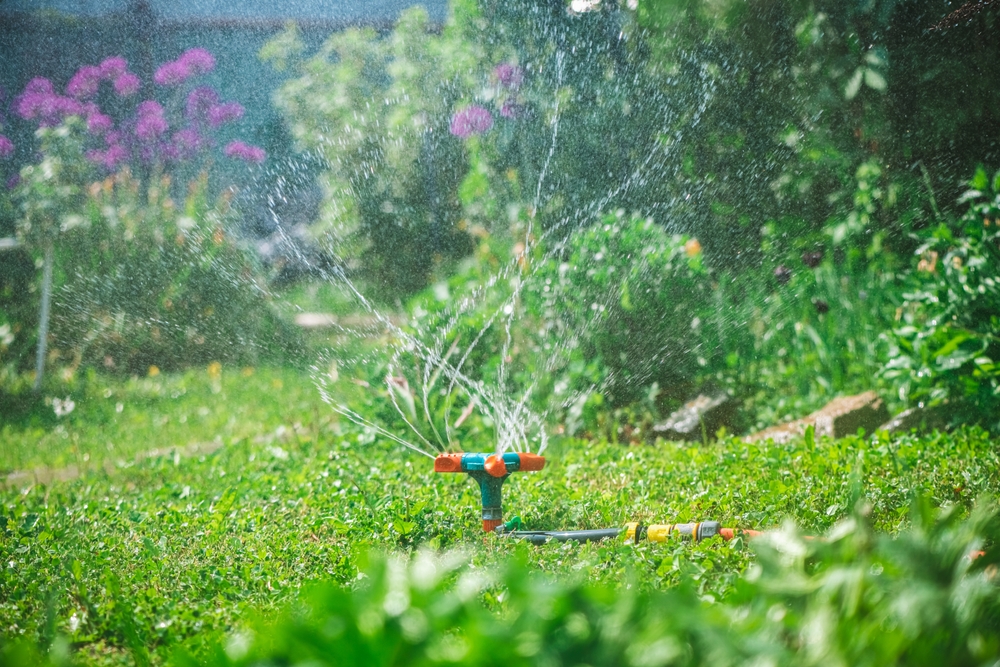
Automatic sprinklers can be a time-saving option for keeping your garden watered during a heatwave. These systems can be set to run at specific times of the day, ensuring that your plants get the water they need even when you are not home. By using automatic sprinklers, you can schedule watering during cooler parts of the day, like early morning or late evening, to minimize evaporation.
Modern automatic sprinkler systems often come with moisture sensors that can adjust watering schedules based on the amount of rainfall your garden has received. This prevents over-watering and conserves water, which is especially important during hot weather. With the right setup, automatic sprinklers can help maintain consistent moisture levels for your plants while making your watering routine more efficient.
Choose Light-Colored Pots
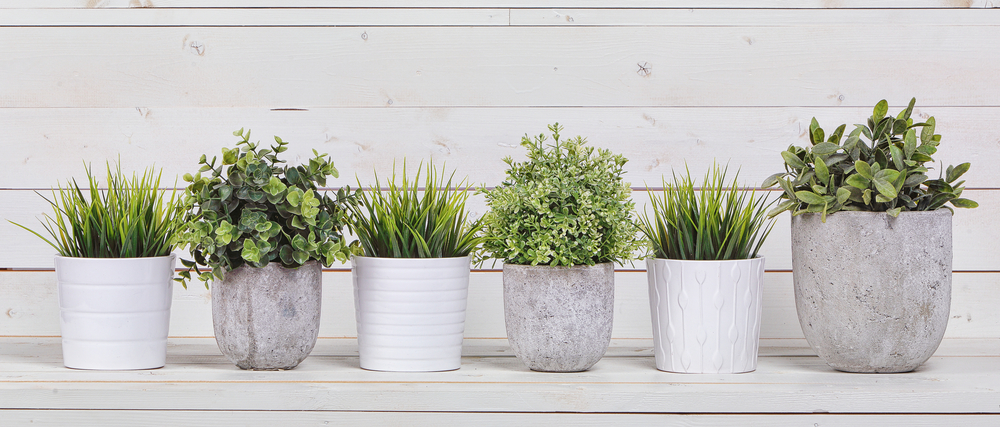
For container gardening, using light-colored pots is a simple yet effective strategy during a heatwave. Dark pots absorb more heat, which can cause the soil inside to dry out faster, stressing the plants. Light-colored pots reflect more sunlight, keeping the soil cooler and preventing rapid evaporation. This helps retain moisture for a longer period and reduces the need for frequent watering.
Light-colored pots are particularly useful for plants that are sensitive to heat and need to retain moisture. You can also combine this method with other water-saving techniques, such as using self-watering containers or adding a layer of mulch on top of the soil to further conserve moisture.
This article originally appeared on Avocadu.
